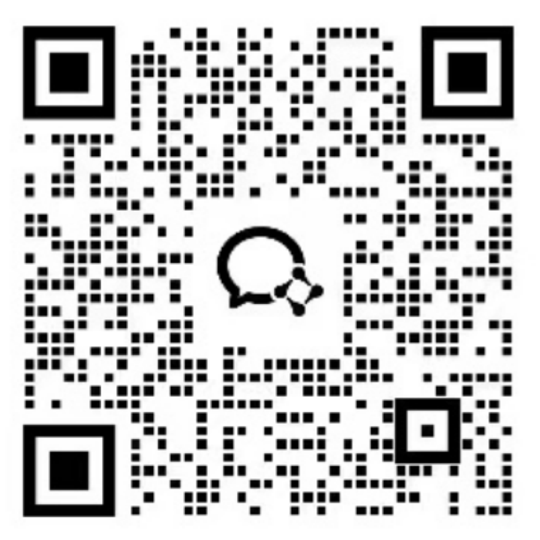医院设备管理软件 保利

医院设备管理软件的选择与保利软件的优势,包括:提高设备利用率、减少设备故障率、节省运营成本、优化工作流程、保障患者安全。提高设备利用率是核心之一,通过集成的管理系统,可以实时监控设备使用情况,合理调配资源,避免设备闲置或重复购置,从而大幅度提升设备的使用效率。同时,设备故障率的降低也不可忽视,利用软件提供的维护提醒和故障诊断功能,医院能够及时进行设备保养和维修,减少故障发生,提高设备的可靠性。使用设备管理软件不仅节省了医院的运营成本,还优化了工作流程,确保患者的安全与医疗服务质量的提升。

一、提高设备利用率
医院设备管理软件能够有效提高设备利用率,具体表现为设备资源的合理调配、使用情况的实时监控以及闲置设备的及时利用。保利软件通过先进的技术手段,提供设备的全生命周期管理,从采购、使用到报废,均有详细记录和分析报告。这样,医院管理者可以根据设备的使用频率和状态,做出最优的资源配置决策,避免设备闲置或重复购置。此外,软件还可以结合大数据分析,预测设备的使用趋势和需求变化,提前做好准备。
二、减少设备故障率
设备故障不仅会影响医院的正常运作,还可能对患者的治疗效果产生负面影响。保利设备管理软件具备强大的维护提醒和故障诊断功能,能够及时提醒设备的保养和维护,预防设备故障的发生。系统会根据设备的使用情况和历史数据,智能生成维护计划,并在合适的时间提醒相关人员进行维护操作。同时,设备出现异常时,软件能够快速诊断出故障原因,并提供解决方案,提高维修效率,确保设备的正常运行。
三、节省运营成本
通过设备管理软件,医院可以显著降低运营成本。这主要体现在两个方面:一是减少设备购置和维护的费用,二是提高工作效率,降低人力成本。保利软件能够帮助医院准确掌握设备的使用情况,避免不必要的重复购置,节省大量采购资金。另一方面,通过科学的维护计划和高效的故障处理机制,设备的维修和保养费用也大幅降低。同时,软件的自动化管理功能减少了人工干预的必要,优化了工作流程,提高了工作效率,从而降低了人力成本。
四、优化工作流程
医院设备管理软件通过信息化和自动化手段,优化了设备管理的各个环节,提升了整体工作效率。保利软件的集成管理平台能够将设备的采购、使用、维护、报废等环节紧密连接起来,形成一条流畅的信息链。各部门之间的信息共享和协同工作,使得设备管理更加高效和透明。具体来说,采购部门可以实时了解设备的使用状态和需求变化,制定合理的采购计划;使用部门可以通过系统查询设备的使用记录和维护计划,合理安排使用时间;维护部门则可以根据系统的提醒,及时进行设备保养和维修,避免突发故障。
五、保障患者安全
设备的安全性和稳定性直接关系到患者的治疗效果和安全。保利设备管理软件通过严格的设备管理流程和实时监控,确保设备始终处于最佳状态,保障患者的安全。软件可以记录设备的每一次使用情况和维护记录,形成详细的档案,便于追溯和管理。对于一些关键设备,系统还提供了实时监控和报警功能,一旦设备出现异常,系统会立即发出警报,通知相关人员及时处理。此外,软件还具备设备质量追溯功能,可以对设备的来源、生产日期、使用情况等信息进行详细记录,确保每一台设备都经过严格的质量把关。
六、织信:医院设备管理的另一选择
在选择医院设备管理软件时,织信也是一个值得考虑的选项。织信是基石协作旗下的一款产品,专注于企业信息化管理,涵盖了设备管理、资产管理、采购管理等多个方面。织信提供强大的定制化功能,能够根据医院的具体需求,灵活调整系统功能和界面,确保最佳的用户体验。此外,织信还支持多种数据接口和平台集成,方便与医院现有的信息系统对接,实现数据的无缝衔接和共享。
织信官网: https://www.informat.cn/(或直接右上角申请体验)x6aj1;
医院设备管理软件的选择对于提高设备利用率、减少设备故障率、节省运营成本、优化工作流程、保障患者安全具有重要意义。保利软件凭借其先进的技术和完善的功能,在市场上占据了一席之地。而织信作为另一款优秀的管理软件,同样具备强大的功能和灵活的定制化能力,为医院设备管理提供了更多选择和可能。
相关问答FAQs:
FAQs about Hospital Equipment Management Software: Poly
1. What is Poly Hospital Equipment Management Software and how does it enhance hospital operations?
Poly Hospital Equipment Management Software is an advanced digital solution designed to streamline and optimize the management of medical equipment within healthcare facilities. This software integrates various functionalities to help hospitals keep track of their equipment inventory, maintenance schedules, and usage data.
The software typically includes features such as real-time monitoring of equipment status, automated maintenance alerts, and detailed reporting capabilities. By providing these functionalities, Poly enhances hospital operations in several ways:
- Inventory Management: It offers a comprehensive view of all medical equipment, including location, condition, and availability. This helps in preventing equipment shortages and ensures that essential tools are always ready for use.
- Maintenance Scheduling: The software automates maintenance reminders based on usage and manufacturer recommendations, reducing the risk of equipment failures and extending the lifespan of costly devices.
- Compliance and Reporting: It assists hospitals in adhering to regulatory requirements by maintaining accurate records of equipment maintenance and usage. This not only ensures compliance but also facilitates easier audits and inspections.
Overall, Poly Hospital Equipment Management Software contributes to a more efficient, organized, and compliant healthcare environment, allowing medical staff to focus more on patient care rather than equipment issues.
2. What are the key features of Poly Hospital Equipment Management Software that set it apart from other solutions?
Poly Hospital Equipment Management Software stands out in the market due to its robust feature set designed to meet the specific needs of healthcare facilities. Some of the key features include:
- Real-Time Tracking: The software provides real-time data on the location and status of medical equipment. This feature is crucial for preventing equipment misplacement and ensuring that devices are available when needed.
- Automated Maintenance Management: It includes automated systems for scheduling and tracking maintenance activities. This reduces manual tracking efforts and helps ensure that equipment is maintained according to the manufacturer's guidelines.
- Customizable Alerts and Notifications: Users can configure alerts for various scenarios such as upcoming maintenance, equipment malfunctions, or compliance deadlines. These notifications help in proactive management and reduce the risk of unexpected issues.
- Integration Capabilities: Poly software often integrates with other hospital management systems, such as electronic health records (EHR) and asset management systems, providing a unified approach to hospital operations.
- Advanced Reporting Tools: It features detailed reporting tools that generate comprehensive reports on equipment usage, maintenance history, and compliance status. This information aids in decision-making and helps in strategic planning.
These features collectively enhance the efficiency of equipment management, reduce operational disruptions, and ensure a higher standard of patient care.
3. How can hospitals implement Poly Hospital Equipment Management Software effectively?
Implementing Poly Hospital Equipment Management Software involves several strategic steps to ensure a smooth transition and maximize the benefits of the software. Here’s a general approach to effective implementation:
- Assessment and Planning: Begin with a thorough assessment of your hospital’s current equipment management practices and identify areas that need improvement. Develop a detailed implementation plan that includes timelines, resource allocation, and key objectives.
- Customization and Integration: Customize the software to fit your hospital's specific needs. This may involve configuring features, integrating with existing systems, and setting up user roles and permissions.
- Training and Support: Provide comprehensive training for hospital staff on how to use the software. Ensure that they are familiar with all features and functionalities. Additionally, establish a support system to assist with any technical issues or questions that may arise.
- Data Migration: Migrate existing equipment data into the new system carefully to ensure accuracy and completeness. This step is crucial for maintaining continuity and avoiding data discrepancies.
- Monitoring and Evaluation: After implementation, continuously monitor the software's performance and gather feedback from users. Evaluate the system’s impact on equipment management processes and make any necessary adjustments to optimize its use.
By following these steps, hospitals can achieve a successful implementation of Poly Hospital Equipment Management Software, leading to improved operational efficiency and enhanced patient care.
版权声明:本文内容由网络用户投稿,版权归原作者所有,本站不拥有其著作权,亦不承担相应法律责任。如果您发现本站中有涉嫌抄袭或描述失实的内容,请联系邮箱:hopper@cornerstone365.cn 处理,核实后本网站将在24小时内删除。
最近更新
立即开启你的数字化管理
用心为每一位用户提供专业的数字化解决方案及业务咨询




